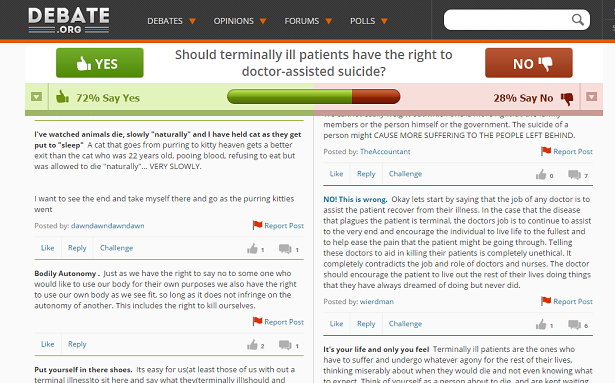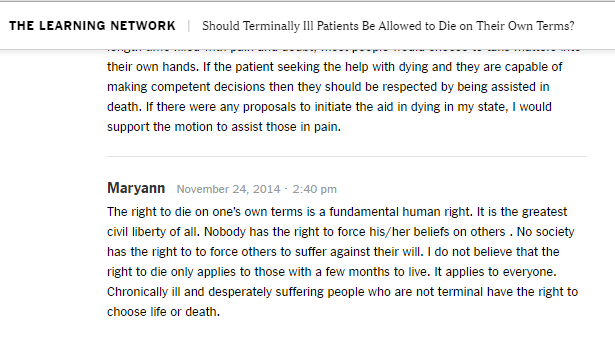This story, in the iPaper today, is awful.
A mother who watched on helplessly as onlookers told her daughter to “jump” as she threatened to leap from a multi-storey car park said she has seen “the worst of humanity.”
…She said: “I saw people sitting in the gutter for three hours watching with their children.”
…After being alerted to the situation by a friend, her mum raced to the scene – and promptly had a panic attack. She was given a seat behind the police cordon by officers, out of sight of her daughter – who told a specialist negotiator she didn’t want to see her family – but not out of earshot of the crowd.
“As soon as people realised there was someone on the roof, they were gathering in groups,” she said. “She was up there for five hours and throughout there were people shouting ‘jump’ at her. And she heard it.
“Even she said later, ‘What did they hope to see? Did they really want to see me splattered on the pavement?’
“Because I was behind the cordon, and had been given a chair and coffee, people had realised I was her mum. “Quite a lot approached me and asked why she was up there and what she was doing. “One said, ‘Stupid cow – why doesn’t she just jump?’”
It’s shocking. It is indeed the worst of humanity.
But if that is, then so is this:
And this:
– Student comments on a post on the New York Times Learning Network blog. The students commenting are as young as 14.
And this:
It is certainly true that the hospice movement offers outstandingly good terminal care, and that modern medicines greatly enhance their ability to provide it. But the existence of palliative care is not to the point for Mrs Pretty. She wishes to die when she is still alert, and able to say goodbye to her family. She does not want to endure the utter helplessness and distress of the last stages of her illnesses, whatever is available in the way of tranquillisers and reassurance. She might be paralysed and wheelchair-bound, but she is still a person with a mind of her own; and she wishes to make choices about her own affairs, above all to say when, where and how she will leave the life which, for all the happiness it has brought in personal terms, is drawing to an end so cruelly. Natural justice says that this is her right; and so does the Convention on Human Rights. All she asks is that her rights be respected.
The emotive difference is in the tone of the comments. Where these three examples were calm and rational and expressed in the abstract, and were seeking a peaceful, sanitised death not a spectacle, the sentiment is the same – if s/he wants to die, s/he should do it. Jump!
If you’re shocked at one you have to consider why you’re not shocked at the other.
I’ve commented before that we seem to hold some weird distinction between mental anguish and the physical variety. That is apparently changing too, however – this article in The Economist supports, with caution, assisted dying for the mentally ill, despite its own assertion that no one wants it:
The hardest question is whether doctor-assisted dying should be available for those in mental anguish. No one wants to make suicide easier for the depressed: many will recover and enjoy life again. But mental pain is as real as physical pain, even though it is harder for onlookers to gauge. And even among the terminally ill, the suffering that causes some to seek a quicker death may not be physical. Doctor-assisted death on grounds of mental suffering should therefore be allowed. [Emphasis mine]
The inexorable logic of a morality that judges right and wrong on instinct with no basis for understanding why it chooses A over B, leads a society to these kinds of conflicting situations, where an organisation can advocate for an outcome it says no one wants; where encouraging a person to jump from a roof is abhorrent, but praising the courage of someone who seeks her own death by medical means is the purview of our elected MPs; where we think about whether to help someone live or die based on how we would treat a suffering cat.
What brave new world is this?




on Aug 17th at 2:29 pm
Very coherantly and sensibly argued. Well done – get on with that book!
on Aug 18th at 11:47 am
At risk of being devil’s advocate… I think the reason the first story is shocking isn’t because of the girl’s suicide attempt, it’s the response of the onlookers. If one thinks of one’s life as one’s own, then part of the autonomy of being human involves the decision to take one’s own life. To my mind, the difference in the above situations is that on the one hand someone is suffering from an illness that can almost certainly get better, whereas on the other there is no hope of recovery. But in either case, valuing someone’s worth involves valuing their decisions, however difficult they may be for us to understand.
on Aug 18th at 2:55 pm
Yes, I think what I find interesting is that we are shocked when someone shouts ‘Jump’ to someone who feels their life isn’t worth living any more, but not when someone argues in a newspaper that someone should be helped to die (pushed?) if they feel their life isn’t worth living any more.
I do get the thing about the distinction between a terminal illness and one that may well improve. That may indeed be a significant factor, but again to me it’s just a question of timescale. If the girl on the roof was told, as I read somewhere today, ‘most people find that their mental health problems clear up by the time they’re 50’, would she not be justified in saying ‘but I don’t want to struggle like this for 30 more years. It’s unbearable.’ just as much as someone terminally ill (because terminal illnesses are not always over quickly, and part of the fear is ‘I could be stuck in misery for years’.).
If it’s about valuing their decisions, why was the police negotiator on the roof? Why aren’t we arguing that they should send doctors up instead, with nice strong painkillers so the person can throw themself off without the fear of it hurting?
Thanks for provoking more thought and discussion!
on Aug 18th at 5:35 pm
It’s interesting that we have counsellors on patrol at Beachy Head to help talk people out of their decision to jump and in these public situations but some find it hard to accept counselling in other forms of proposed self destruction.
on Aug 19th at 8:02 am
Yes! In other forms, counselling is seen as either pointless or an attempt to hinder the patient’s personal freedom. There’s an episode of The West Wing where someone is trying to introduce legislation that says someone seeking an abortion should be offered counselling about the alternatives. CJ says something like, ‘women shouldn’t be lectured about what they do with their own bodies’. For mental health counselling is good and important, why is it ‘lecturing’ and intrusive for other issues? Another really fascinating point that I hadn’t thought through till now.
on Aug 18th at 11:18 pm
So much to say (love these discussions!) – one very strong belief I have is that it absolutely shouldn’t be police negotiators on rooftops. That’s not what they are trained for. It should be doctors, nurses, or others who are specialists in mental illness. Personal experience has shown me that most police have no idea what they’re doing when it comes to mental Heath. This is no slur on them – it’s not what they are trained for. But because hospitals are full and understaffed, the police get left to pick up the slack, which in the end doesn’t help anyone.
on Aug 19th at 7:57 am
Well that’s also a very good point! Though kudos to this chappie who seemed to do his job well!
But yes, what does it say we culturally think the issue is when it’s a crime-fighter who’s sent to deal with it, and the person is held in a police cell until help can be found (or released to do it again because help can’t be found)? The person is being treated as a public nuisance who needs to be got out of the way. If she’d fallen down in the street and had a fit, it would have been an ambulance that had come and whisked her off to hospital. Fascinating; I’d never thought of that. Thanks Abbie!
on Aug 21st at 3:47 pm
That’s very true, Jen, but we have a strange system where we have 3 emergency services to choose from in any situation and the police at least have some trained negotiators to deal with such situations – whether there are enough I don’t know. The other thing I wonder is whether it’s a throw back to the time when suicide was a criminal offence, so automatically became a police matter. it no longer is, but subconsciously it might still seem right for the police to be the right service to be involved. Paramedics aren’t taught these skills and ideally it would seem to me it should be the mental health team who should be called, but as you say they often don’t turn up at police stations to help how awful would it be if noone turned up at a multistorey car park? And even then I’m not sure they are taught such skills. I’m pretty certain that when the police actually get there in time they’re successful in talking people down, so they do a good job. It may just be that people who don’t jump immediately are just asking for help and are willing to be talked out of their decision by anyone.
Going back to mental health issues, I think we have a very limited understanding of the human brain. I don’t think that the decision to have an abortion or not is always a simple case of convenience it is often a complicated process of life choices, emotions, difficulties in understanding changes in a lifestyle and a planned future that now seems in tatters or less than the perfect picture that had been imagined. I think all those issues have a bearing on mental health and a need to ‘get your head straightened out’ to be able to see the future as a less scary place.
on Aug 23rd at 7:24 pm
Interestingly, Bedforshire have just appointed a team of trained mental health workers to respond to all kinds of incidents not just attempted suicide but anywhere where people are in distress and the police are likely to take them into custody for their own and the public’s safety. They go and talk to them and find other support (sounds like family rather than specialist, but at least it’s keeping them out of custody and safe).
on Jan 16th at 10:58 am
[…] to how one person can seemingly hold completely contradictory views on two similar topics (like suicide and assisted suicide). Completely […]